Sweet Thames, run softly, till I end my song
Of all the rivers I have known around the world, none hold as many memories over such an extended period of time as the Thames does for me.
It’s a river of poetry and prose, empire and entertainment, commerce and combat, of bridges, barges, and boats.
I first saw the river as a child on a school trip to London, age eight. I was transfixed by the water traffic, the huge looming barges, the swift tourist launches, even the Cutty Sark and HMS Belfast. And those bridges! Some ornate, others plain, some stone, others metal.
And I still spend hours gazing at the river every time I go back to the city, taking in all these symbols of human triumph over the river.1
It wouldn’t be possible to contain in one essay, or even in a book, everything I have thought, experienced, or felt along its banks.
So I’ll just attempt, in this second edition of Rivers of No Return, to give a few glimpses of what the river means to me—via fragments or vignettes and mostly through the lens of literature, in keeping with this newsletter’s manifesto.
In truth, these pieces below feel like barges in their own right, freighted with memories, but necessarily the cargo is incomplete. There’s only so much a barge—or my memory—can carry at one time.
Each “barge” below comes loaded with memories and quotations about the Thames.
1.
A Spellbound Palace
If you’ve been following
’s slow read of Hilary Mantel’s Cromwell Trilogy, you’ll know about Cardinal Wolsey. He started work on a fabulous palace on the banks of the Thames, Hampton Court, which Henry VII promptly monopolised, taking all six wives there. It’s a magnificent, intricate building in a spectacular setting. I love the place, and I especially recall a blissfully warm Easter Sunday that was perfect for the first picnic of spring many years ago. But there's a sadness that lingers, even on bright summer days in its exquisite rose garden. Thomas Hardy captured this so well in his poem, A Spellbound Palace.The poem begins:
“On this kindly yellow day of mild low-travelling winter sun
The stirless depths of the yews
Are vague with misty blues:
Across the spacious pathways stretching spires of shadow run,
And the wind-gnawed walls of ancient brick are fired vermilion.”
I love his description of the “wind-gnawed” walls!
And it ends:
“And there swaggers the Shade of a straddling King, plumed, sworded, with sensual face,
And lo, too, that of his Minister, at a bold self-centred pace:
Sheer in the sun they pass; and thereupon all is still,
Save the mindless fountain tinkling on with thin enfeebled will.”
Hardy evokes something important about England here, I think. The English often experience history as a daytime haunting of old kings and queens. Their ghosts are enfeebled, but they still entice us back into the past and sap our will to confront the present or shape the future.
2.
Out on the water
It’s a treat to be out on the Thames on a day of sparkling sun, feeling the wind and the spray on your face, and moving through the history of an entire city as you gaze upon the passing banks.
Even before I got to know London well, I knew the famous music composed for a royal procession on the river, Handel’s celebrated Water Music.
You can listen to the music here. Composed for King George I in the summer of 1717, the monarch liked it so much as the notes echoed across the waters of the Thames that evening that it was played in its entirety a second and then a third time. The exhausted musicians finally got back to shore at 3.00am.
Equally gruelling, in its own way, is the famous Oxford and Cambridge Boat Race. Launched in 1829, it is comparatively modern by the standards of those universities or even of Handel’s extravaganza, but the Boat Race nevertheless draws a crowd. A few years ago, I stood by a bridge on the Middlesex shore,2 cheering on my old university’s boat. Usually the winner becomes clear well before the end, but that year it was a photo finish, and so as the crews flashed (and grunted) by, we couldn’t tell who was in the lead. The excitement of the crowd was intense, and fortunately, the right boat won by a nose, or whatever the expression is in rowing.
One of the great chroniclers of boating life on the Thames was, of course, Charles Dickens. And I love his description in Great Expectations:
“Of barges, sailing colliers, and coasting-traders, there were perhaps, as many as now; but of steam-ships, great and small, not a tithe or a twentieth part so many. Early as it was, there were plenty of scullers going here and there that morning, and plenty of barges dropping down with the tide...[W]e went ahead among many skiffs and wherries briskly.”
But perhaps the most celebrated rowers in London’s literary history are Elizabeth and Leicester in The Fire Sermon, part of TS Eliot’s The Waste Land. As I stop to contemplate the river from the vantage point of Blackfriars or Westminster Bridge, I will sometimes mutter to myself these lines from the poem:
Elizabeth and Leicester
Beating oars
The stern was formed
A gilded shell
Red and gold
The brisk swell
Rippled both shores
Southwest wind
Carried down stream
The peal of bells
White towers
3.
Towers of London
One of the most famous buildings overlooking the Thames is the Tower of London. London has many towers. Indeed, the Tower itself has many towers. But the singularity of the place is captured in its name. It began as a fortress and a royal residence, though the strategic location on the river had also been attractive to the Romans, and the remains of a Roman wall can be seen nearby. It’s been, among other things, a menagerie. But it’s best known as a place of imprisonment and execution These grim antecedents have, perversely, helped to make the Tower one of the city’s top tourist attractions.
I went there on my very first visit to London, when my primary school visited the momentous Tutankhamun exhibition at the British Museum in 1972. I wish I could say that what grabbed my attention were the Beefeaters, or the famous ravens, or the majesty of the towers themselves.
But what I most remember is what happened when I rested myself against a tree. Reeling back in horror, I found that my hands and arms were covered in soot. The trees I grew up seeing on the farm in Devon might sometimes get splashed with mud or manure, but the idea of a tree trunk being covered in soot was incomprehensible to me.
It was only years later that I realised that this kind of pollution was actually decreasing in London at the time, due partly to the landmark 1956 Clean Air Act. If I’d visited ten years earlier, the tree would have been a lot dirtier! And these days, the river is also cleaner, even attracting dolphins and seals.
But at the age of nine in 1972, I was simply appalled that a tree could be blackened by pollution in this way, and the image has haunted me ever since.
4.
A poet’s river
I’ve already quoted TS Eliot’s famous lines about the Thames. Although it’s not the most picturesque of rivers, certainly not in London, I think of it as a poet’s river, not just because so many have crossed it, walked along its banks, or even arrived from overseas via its broad estuary. But also because of the way its constant flow brings life to the city, and its bridges—such as Blackfriars, Waterloo, and Southwark—are a perfect vantage point—if not too crowded with tourists or commuters—to contemplate the city skyline and reflect on life and the universe.
The most famous example of a poet capturing a moment of reflection on the Thames is Composed upon Westminster Bridge, September 3, 1802, by Wordsworth, a poet much better known for his celebration of nature:
“Ne'er saw I, never felt, a calm so deep!
The river glideth at his own sweet will”
In the previous century, a very different poet, one who was much more of a city and suburban poet, Alexander Pope, smoothly celebrated the river from his vantage point at Twickenham:
THOU who shalt stop, where Thames' translucent wave
Shines a broad mirrour through the shadowy cave
The river continues to attract the gaze and observation of poets. As in, for example, John Challis’s Thames, where he describes the river as the place “where every London intersects.”
The 19th-century essayist Charles Lamb, brought up in the Inner Temple, London’s legal district, adored Edmund Spenser’s famous poem, Prothalamion, which contains the most commonly-repeated line of verse about the Thames. Lamb wrote, "I repeat, to this day, no verses to myself more frequently, or with kindlier emotion, than those of Spenser, where he speaks of this the Inner Temple:
‘There when they came, whereas those bricky towers,
The which on Thames' broad aged back do ride,
Where now the studious lawyers have their bowers
There whilom wont the Templar Knights to bide’
But the most famous line in Prothalamion is its refrain:
Sweet Thames, run softly, till I end my song.
Like many readers, I first came across it via Eliot’s The Waste Land. It’s a beautiful line that mimics the endless flow of the river both through repetition and in its own gently pulsing rhythm.
5.
The South Bank
Paris has its Rive Gauche (left bank)3. London has its south bank4, which has historically enjoyed a lower status than the northern one. But for me, since the early 1980s, the South Bank has always meant the South Bank Centre, the National Theatre, and then the BFI. It was there that I saw my first major exhibition of a modern painter, Picasso, at the Hayward Gallery in the summer of 1981. And it was at the National Theatre that I had my first chance to see Waiting for Godot, a play I’d studied at school and practically revered. These days, that part of the riverbank is often crowded with theatregoers, film buffs, and music lovers, as well as tourists. And further downstream, now there are Shakespeare’s Globe and the Tate Modern to enjoy. And what makes these cultural attractions so special to me is that the Thames is almost always in view.
6.
Empire
Imperial capitals have a certain feel to them, as I have experienced in Mexico City, Beijing, Istanbul, and even Kyoto. There are clues to their past glories and arrogance to be found everywhere. London is no exception, and the key here is the river. When I look at the Thames, the city’s imperial past often comes to mind. Here were its trading ships; here was the starting point of so many scientific and imperialist expeditions; here was where the colonial overseers drew up its rules in offices along its bank; here were the courts that enforced the laws of Empire; here sat the parliament cheering its adventures and condemning its losses while glossing over its atrocities. And further down the river was Greenwich, the site of a naval college and the Observatory, which gave its name to Greenwich Mean Time and had its origins in attempts to set a standard time for the British Empire.
Nowadays, as well as the shades of monarchs past, there’s a sense of faded imperial power. Britain, of course, had many ports from which to run its trading empire or to send out ships in combat, but London and its river were always the centre of power. The lowering tide would take the ships to the outposts of the empire, and the rising tide would bring back goods, riches, and archaeological plunder from those same places.
Not long ago, I came across a quotation from Joseph Conrad about the Thames that startled me. It was Conrad, of course, who excoriated the predatory habits of empire in Heart of Darkness (1899). In a 1904 essay about the Thames, however, Conrad effectively re-imagined London as the Heart of Darkness itself. He put himself in the place of a Roman entering the river to face its savage denizens and likened the stretch of Thames from London Bridge to the Albert Docks to “a jungle...like the matted growth of bushes and creepers veiling the silent depths of an unexplored wilderness.” 5
7.
The Voyage Out
Earlier in this essay, I mentioned The Waste Land; it was only recently that I found out that the poem had been hand set for publication by none other than Virginia Woolf.
Woolf lived much of her life in London, and for a time she lived in Richmond, not far from Twickenham, where Pope had lived, and not far from Mortlake, where I once lived myself.
She wrote beautifully about the river in her first novel, The Voyage Out (1915), one of my favourites amongst her books. The first chapter sets the scene for the voyage beautifully with a lovely description of the boats on the river:
“The river, which had a certain amount of troubled yellow light in it, ran with great force; bulky barges floated down swiftly escorted by tugs; police boats shot past everything; the wind went with the current. The open rowing-boat in which they sat bobbed and curtseyed across the line of traffic....Very dimly in the falling dusk they could see the lines of the rigging, the masts and the dark flag which the breeze blew out squarely behind.”
This glorious writing takes me back to the Dickens passage I quoted earlier, or the same writer’s Our Mutual Friend, his last completed novel, where the Thames is arguably the main protagonist of the story.
Woolf gave a talk for the BBC towards the end of her life in which she said, “Words, English words, are full of echoes, of memories, of associations.” In the light of that remark, I like to imagine that in the opening of The Voyage Out, Woolf is effectively taking the baton from Dickens, though long-since dead, as the great living English novelist. She grasped that baton in the form of the River Thames, so full of echoes, memories, and associations related to Dickens’ work.
And it’s in this way that I imagine Spenser’s “sweet Thames” flowing like words from writer to writer, its endless current passing from the gentle English hinterlands out into the harsh North Sea, laden with our thoughts and lives and still nourishing the city’s imagination.
I should probably have put scare quotes around the word triumph. The Thames is prone to flooding. It has been tamed by the Thames Barrier, but, to quote Eliot’s words in Dry Salvages, the river is “implacable/Keeping his seasons and rages, destroyer, reminder/Of what men choose to forget.”
The other shore is Surrey. Both are counties adjoining (and mostly swallowed by) London.
I wrote about the addiction both the French and the English have to comparing our respective capital cities here.
Nobody talks of the “north bank” as far as I’m aware.
Joseph Conrad, The Mirror of the Sea [New York: Harper & Brothers, 1906], pp.178–79. Quoted in “The Dawn Watch: Joseph Conrad in a Global World” by Maya Jasanoff (2017).





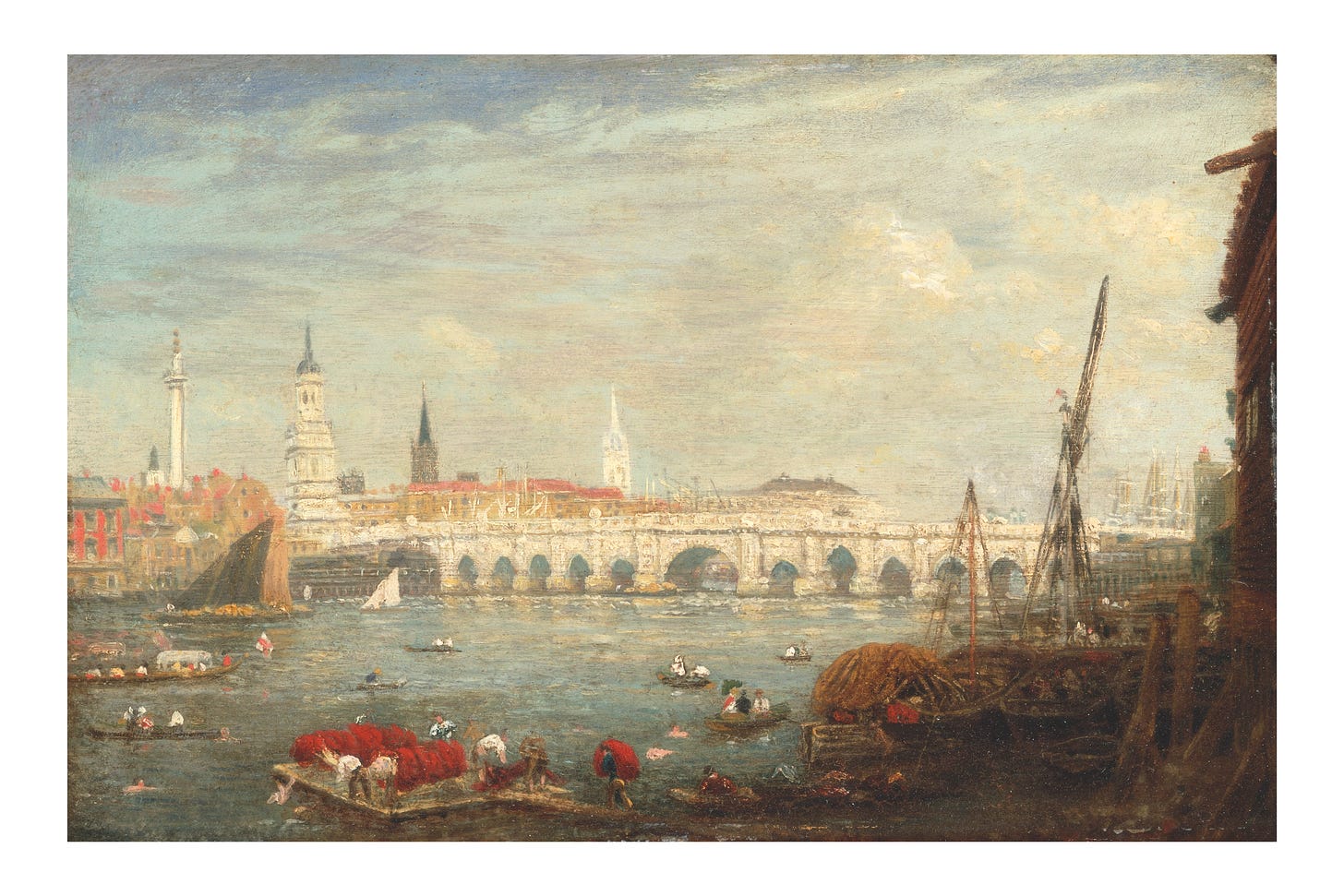
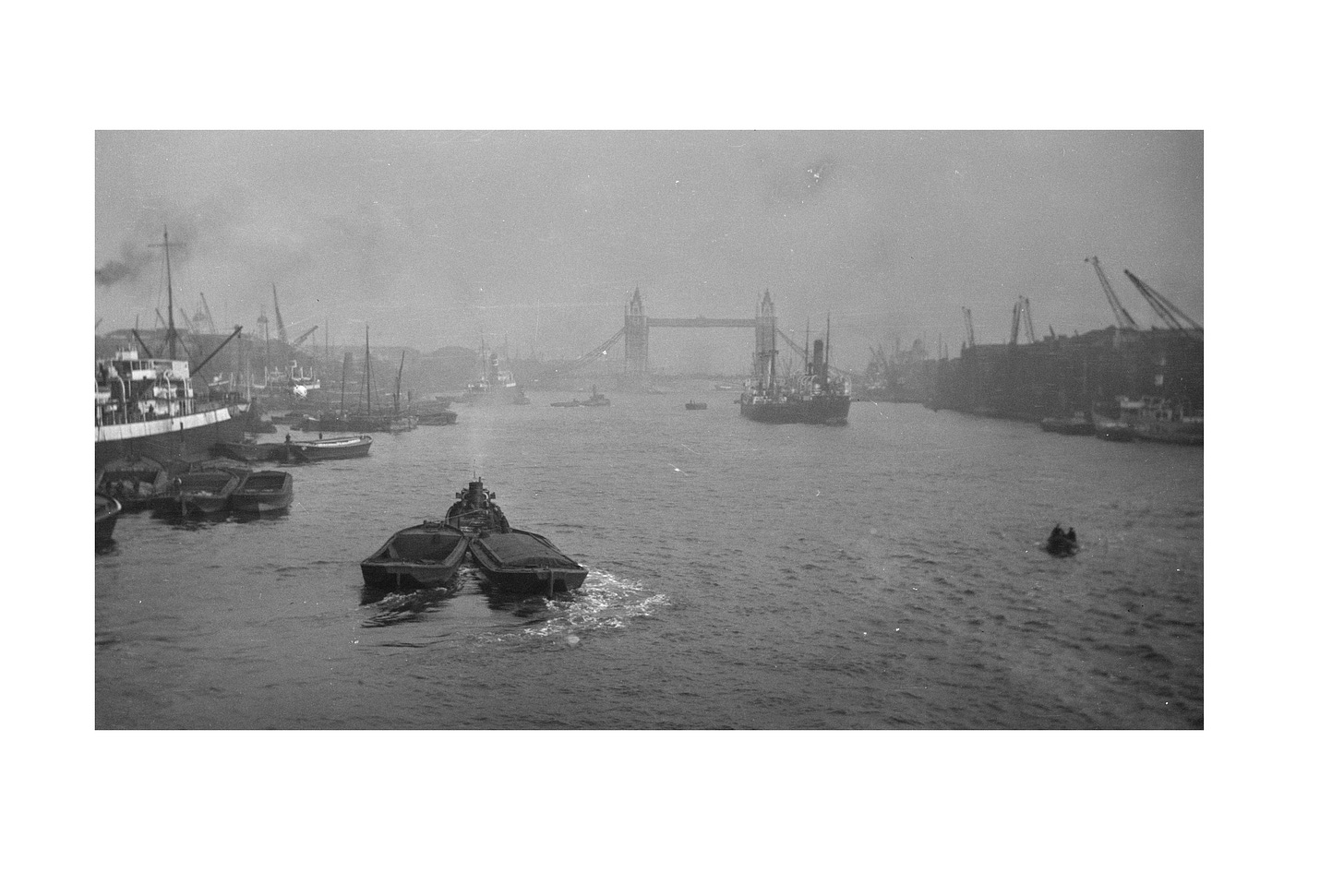
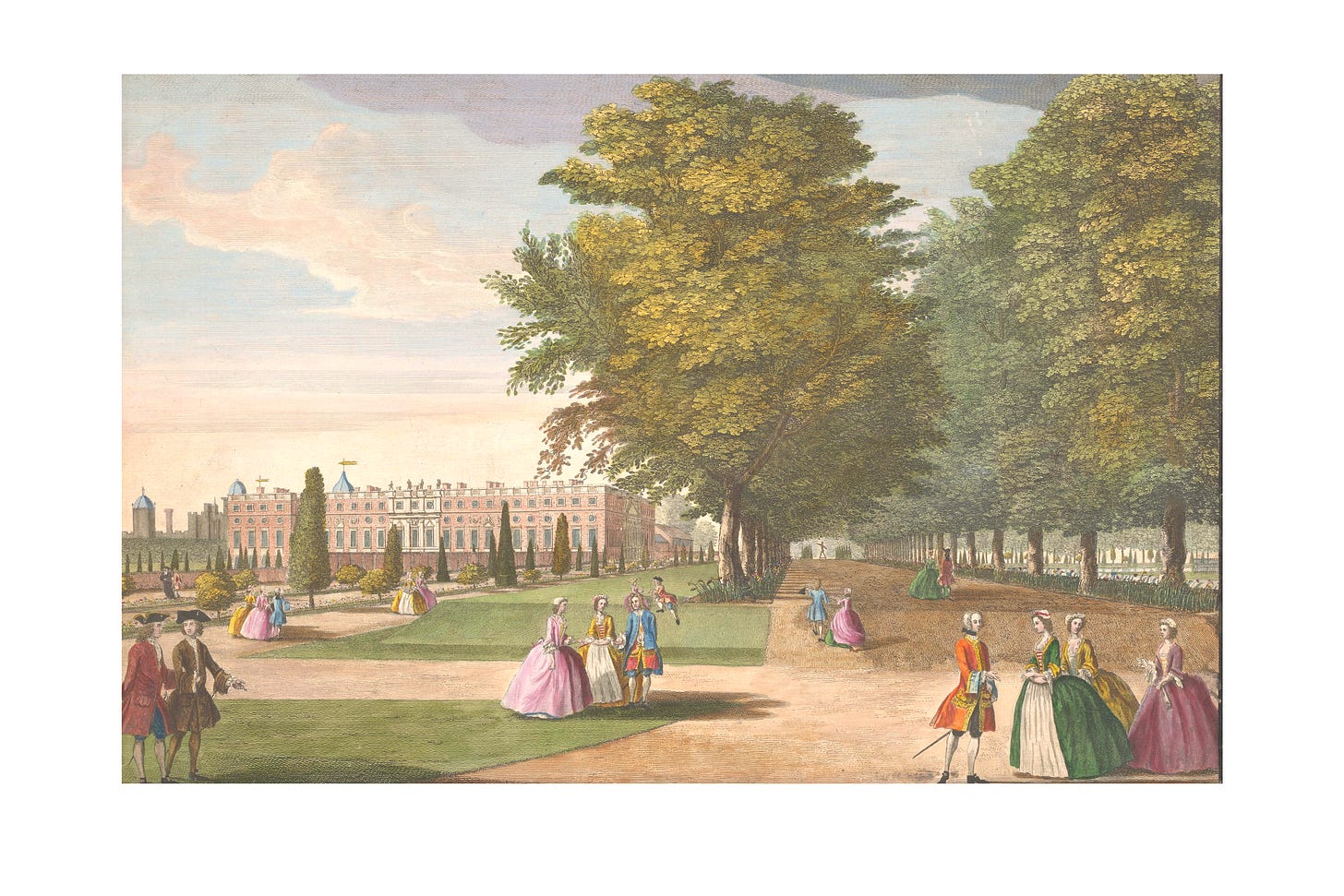


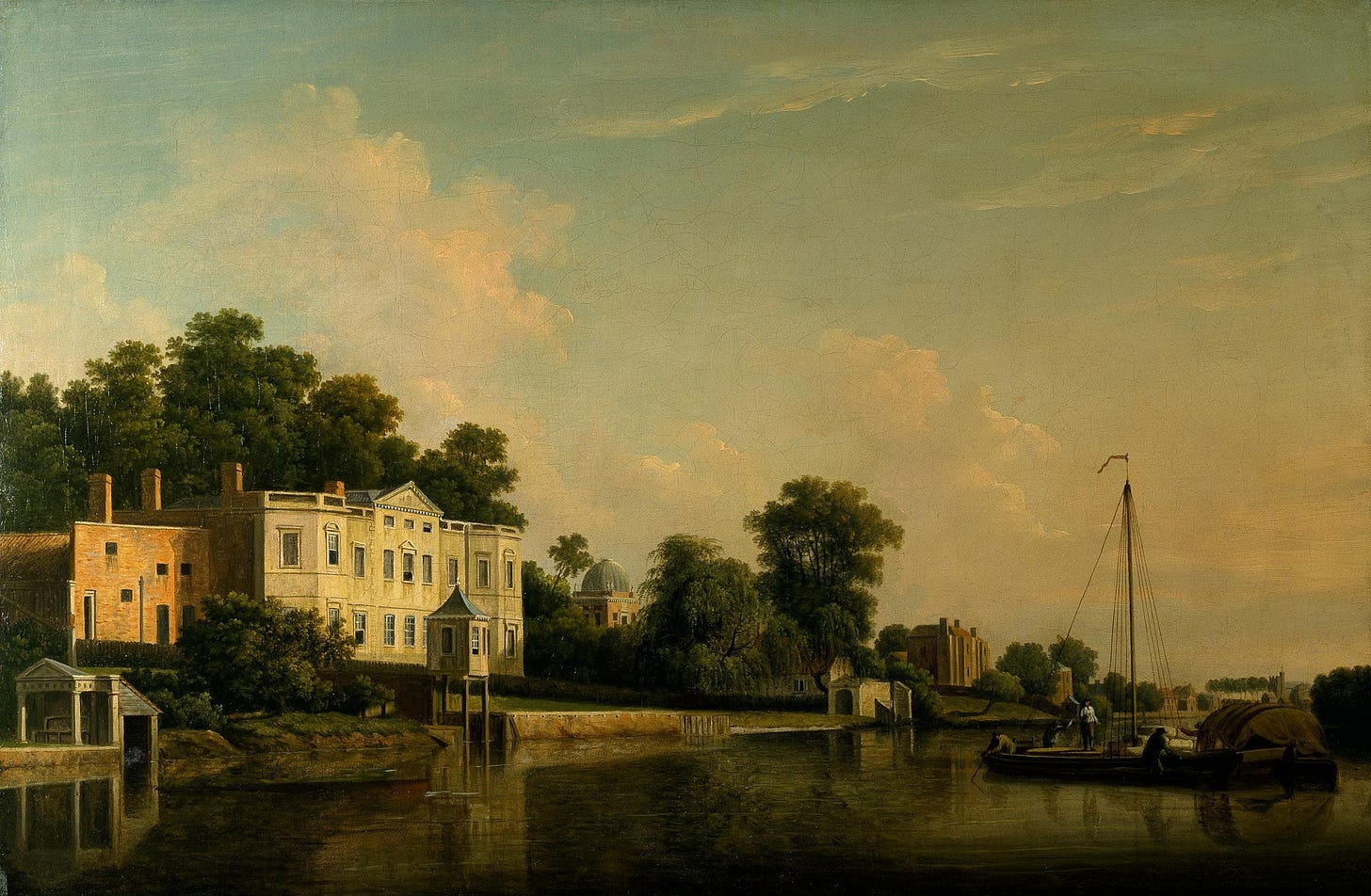


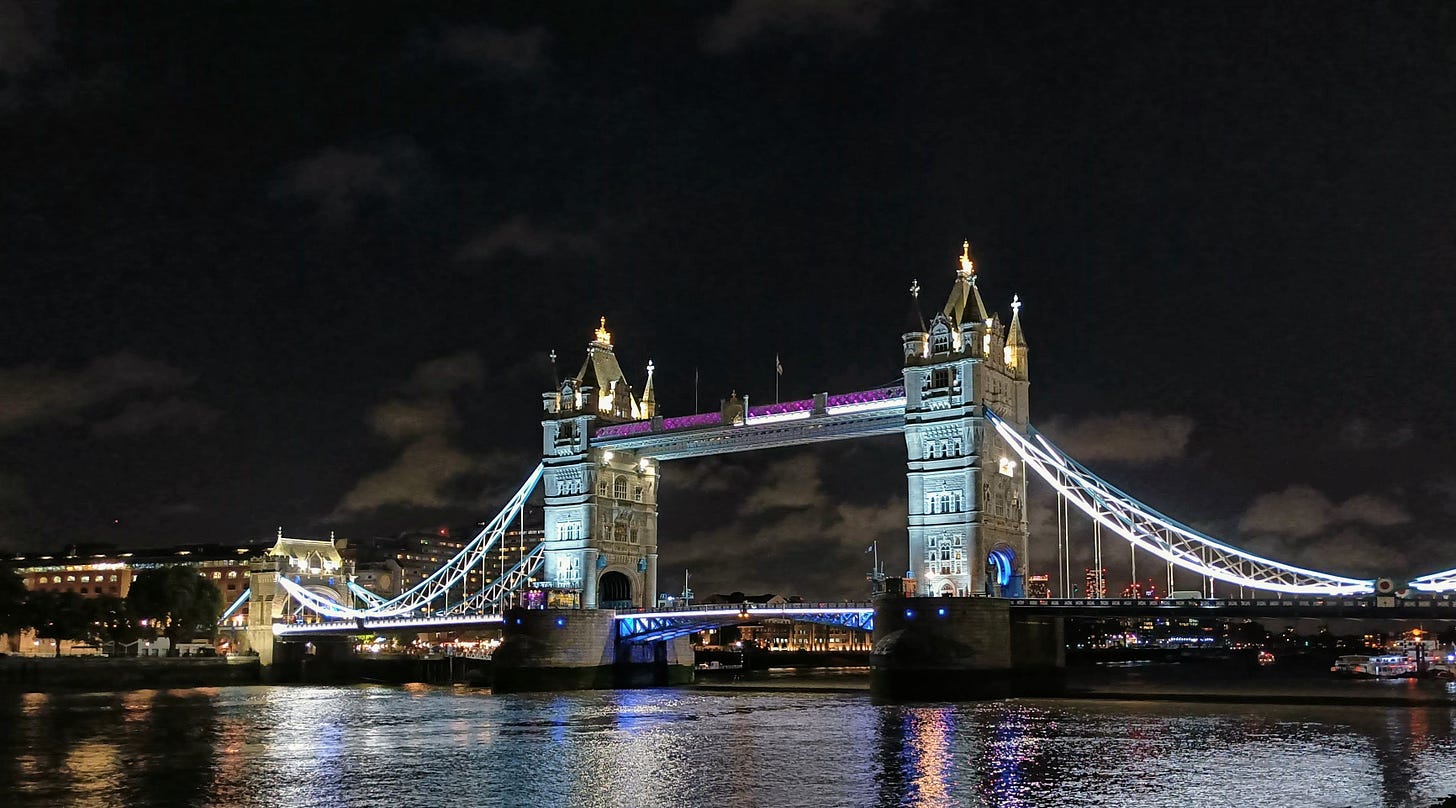
😎👍Love the idea! Have to take a raincheck: am stuck in Miami. But just a few weeks ago mentioned in a Substack post that I'd love to see a Substack river cruise and now you're doing it!
What a glorious investigation, Jeffrey! There's something about a river that can define a place but it seems the Thames is special. I'll be moving near it in a few months, so I'm happy to learn about more of its history and charm. The King George anecdote about the musicians was great. I like the way you give us many numbered thoughts and allusions with a bit of space for the reader to make our own connections.